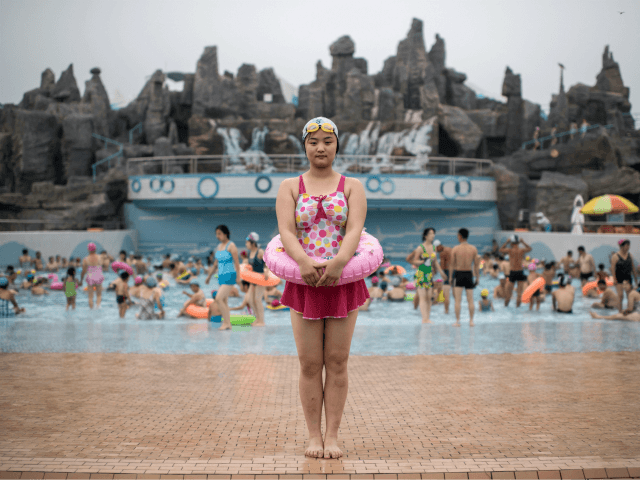Analysts at 38 North on Wednesday reviewed evidence of extensive construction at the Wonsan-Kalma resort, possibly indicating North Korea expects sanctions to end, engagement with the outside world to increase, and tourism to boom.
The resort, formally known as the Wonsan-Kalma Tourist Zone, was prominently mentioned in dictator Kim Jong-un’s address on New Year’s Day. Although Kim seemed less than enthusiastic about the construction project when he visited the area in October, a tremendous amount of work has been completed, and it seems plausible the resort could open for business by October 2019:
Commercial satellite imagery shows that the resort was only a few buildings near the Wonsan-Kalma airport in July 2017 but had grown into a vast beachfront complex in just over a year. Kim’s reported “disappointment” of the project – criticizing the design and layout of the resort, and calling for more amenities, such as game arcades, theaters, and a funfair – follows in line with his more critical demeanor during his site visits since last summer.
After Kim’s October site visit, the pace of construction remained high and by December, the majority of buildings that had been under construction nearing external completion and several new or redesigned buildings were in advanced stages of construction. There were significant efforts to landscape and beautify the resort grounds as well.
After five years of somewhat indifferent work on the project, construction suddenly surged in the summer of 2018, with work visibly completed on over a hundred buildings, 40 of them more than one story tall. The structures include a marina, a sports complex, entertainment arcades, a movie theater, and swimming pools that seem to be mutating into a family fun park with water slides.
CNN noted on Thursday that the Wonsan airport, formerly a military installation, has been designated as a dual-use facility and an international terminal was constructed in 2015, but no international flights have landed there yet.
The entire resort could be seen as “dual-use,” since the North Korean military has a habit of launching ballistic missiles and testing artillery in the area. President Donald Trump obliquely referred to this at a press conference after his summit with Kim last June when he said of North Korea, “They have great beaches. You see that whenever they’re exploding their cannons into the ocean.”
Either the military plans to suspend those activities when the resort opens, or the North Koreans think visitors will find missile tests and artillery drills entertaining.
Kim’s investment will only pay off if sanctions are lifted and an enormous number of tourists become willing to vacation in a country notorious for abusing foreign visitors. Brochures touting the project anticipate 10 million visitors a year, which would be a hundred times the size of the current annual tourist population for the entire country.
One theory for the Wonsan activity is that Kim wants to ease the pain of sanctions by bringing in Chinese tourists, but the scale of the project seems far beyond reasonable expectations for a sanctions-defying hospitality industry, or a vanity project in a location Kim is personally fond of.
Chinese visitors will clearly be a mainstay for the Wonsan resort under any scenario; on Tuesday the Chinese announced $890 million in loans to North Korea for the purpose of building an expressway from Wonsan to the coastal Chinese city of Hamheung, complete with three sizable tunnels through the intervening hills. Work is expected to begin in April and will take three years to complete.

COMMENTS
Please let us know if you're having issues with commenting.